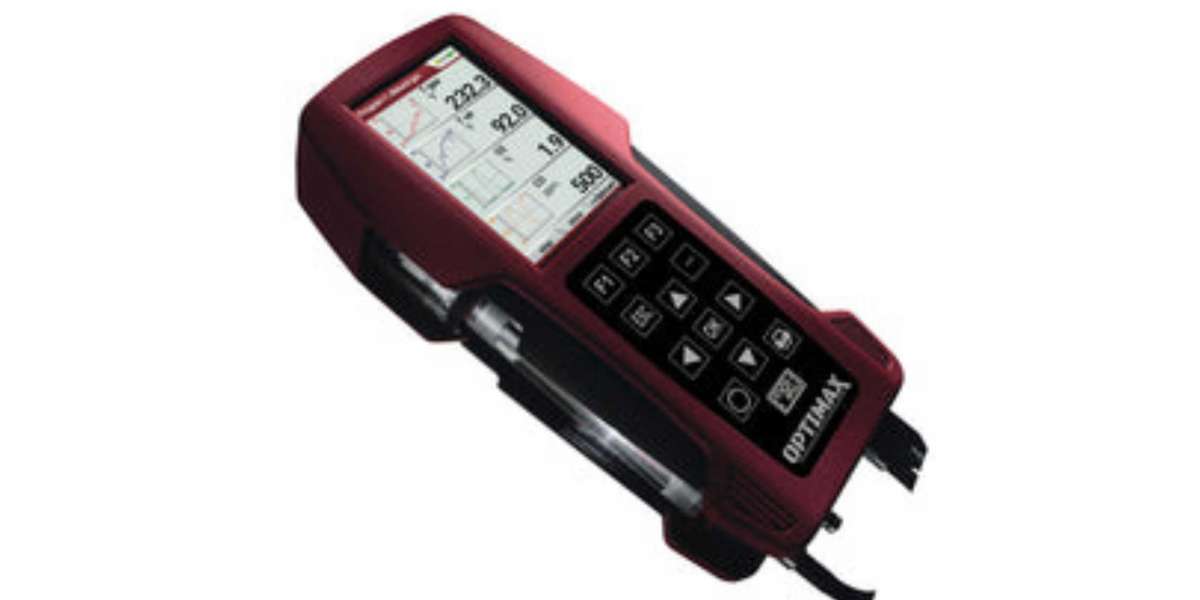Whether you're operating a municipal waste treatment plant, an agricultural facility, or a landfill, understanding how to choose the right biogas analyzer can significantly impact the efficiency and profitability of your operations. This article will explore the key factors to consider when selecting a biogas analyzer system that best fits your needs, offering practical insights for professionals in the field.
Understanding Biogas Analyzers
What is a Biogas Analyzer?
A biogas analyzer is a specialized instrument designed to measure the composition and quality of biogas produced during anaerobic digestion processes. These analyzers provide real-time data on key gas components such as methane (CH₄), carbon dioxide (CO₂), hydrogen sulfide (H₂S), and oxygen (O₂), allowing operators to monitor and optimize biogas production effectively.
Importance of Biogas Analyzers
The efficient operation of biogas production facilities relies on accurate and continuous monitoring of gas composition. By utilizing a biogas analyzer, operators can:
- Maximize Methane Production: Methane is the primary energy source in biogas. Monitoring its levels helps optimize conditions for anaerobic digestion.
- Ensure Safety: High levels of H₂S and O₂ can pose safety risks. Regular monitoring ensures compliance with safety regulations.
- Optimize Resource Use: Understanding gas composition allows for better resource management and minimizes waste.
Key Components of Biogas Analyzers
To select the right biogas analyzer, it's essential to understand its key components and their functions.
Sensors
The heart of any biogas analyzer is its sensors, which detect the concentration of various gases. The choice of sensors affects:
- Measurement Range: The ability to detect low and high concentrations.
- Response Time: How quickly the analyzer can provide readings.
Data Processing Unit
The data processing unit interprets signals from the sensors and converts them into usable data. A robust processing unit enhances:
- Data Accuracy: Reduces the risk of errors in readings.
- Data Logging: Allows for historical data analysis.
Display and User Interface
A user-friendly interface is crucial for effective operation. Features to consider include:
- Screen Size: Larger screens offer better visibility.
- Intuitive Navigation: Simplifies operation and reduces training time.
Calibration and Maintenance
Regular calibration ensures accuracy. Key factors include:
- Frequency of Calibration: Depends on usage and environmental conditions.
- Ease of Maintenance: Simpler systems require less downtime.
Types of Biogas Analyzers
When selecting a biogas analyzer, it’s important to understand the different types available.
Portable vs. Fixed Systems
- Portable Analyzers: Ideal for fieldwork and spot checks. They are typically lightweight and battery-operated.
- Fixed Analyzers: Installed in a permanent location for continuous monitoring. They provide real-time data but may require more maintenance.
Continuous vs. Batch Analyzers
- Continuous Analyzers: Offer real-time monitoring and are suitable for processes requiring constant oversight.
- Batch Analyzers: Used for periodic measurements, ideal for facilities that do not require constant monitoring.
Multi-gas Analyzers
These analyzers can measure multiple gas components simultaneously, saving time and resources. They are particularly beneficial for complex biogas systems where various gases need to be monitored.
Factors to Consider When Choosing a Biogas Analyzer
Choosing the right biogas analyzer involves evaluating several critical factors:
Measurement Accuracy and Sensitivity
Select a biogas analyzer that offers high accuracy and sensitivity for the specific gases you need to measure. A device with a smaller margin of error will provide more reliable data.
Range of Analytes
Different applications may require different gases to be monitored. Ensure the analyzer can measure the gases relevant to your specific process.
Environmental Conditions
Consider the operational environment of the analyzer. Factors such as temperature, humidity, and potential exposure to corrosive gases can affect performance. Choose an analyzer designed to withstand these conditions.
Ease of Use and Maintenance
A user-friendly analyzer will facilitate quicker training and ease of operation. Additionally, assess the maintenance requirements to ensure they align with your operational capabilities.
Budget and Cost Considerations
While it's essential to invest in quality equipment, balance the features you need with your budget. Consider both the upfront cost and long-term operational expenses, such as calibration and maintenance.
Top Biogas Analyzers in the Market
Overview of Leading Brands
Several reputable brands manufacture biogas analyzers, each with unique features and benefits. Here’s a brief overview:
- Diamond Scientific
- Specializes in portable and fixed biogas analyzers with advanced data logging capabilities.
- Offers a range of sensors for different applications.
- Siemens
- Provides continuous monitoring systems known for their accuracy and reliability.
- Integrates with existing control systems for enhanced data management.
- Horiba
- Known for high-performance multi-gas analyzers.
- Offers customizable solutions tailored to specific industry needs.
Comparison of Features
When comparing models, consider:
- Sensor Types: Different brands may use various technologies (e.g., infrared, electrochemical).
- Data Handling: Look for features like cloud storage and advanced analytics.
- User Feedback: Check reviews to gauge performance and reliability in real-world applications.
Installation and Calibration
Importance of Proper Installation
Installing a biogas analyzer correctly is crucial for its performance. Improper installation can lead to inaccurate readings and affect overall efficiency.
Steps for Calibration
- Follow Manufacturer Guidelines: Each model will have specific calibration protocols.
- Use Calibration Gases: Ensure that the gases used for calibration match the gases being measured.
- Document Calibration Records: Keep detailed records for compliance and future reference.
Case Studies and Real-world Applications
Success Stories
- Wastewater Treatment Plant in California
- Implemented a continuous biogas monitoring system, resulting in a 15% increase in methane recovery.
- Agricultural Digester in Iowa
- Utilized a portable analyzer for field measurements, improving the overall efficiency of the anaerobic digestion process.
Lessons Learned
- Invest in Training: Proper training for staff on using the analyzers ensures accurate data collection.
- Regular Maintenance is Key: Frequent checks and maintenance prolong the lifespan of the equipment and maintain accuracy.
Future Trends in Biogas Analysis
Technological Advancements
The future of biogas analysis is poised for significant advancements, including:
- Smart Sensors: Integration of IoT technology for real-time data sharing and monitoring.
- Enhanced Data Analytics: Using AI to predict biogas production trends based on historical data.
Regulatory Changes
As regulations regarding emissions and waste management tighten, biogas analyzers will play a critical role in ensuring compliance and sustainability.
Conclusion
Choosing the right biogas analyzer involves a comprehensive understanding of your operational needs, the types of gases you need to measure, and the environmental conditions of your facility. By considering factors such as measurement accuracy, ease of use, and budget, you can select a system that enhances the efficiency of your biogas production process. With advancements in technology and growing regulatory demands, investing in a quality biogas analyzer is more critical than ever for organizations committed to sustainability and operational excellence.







